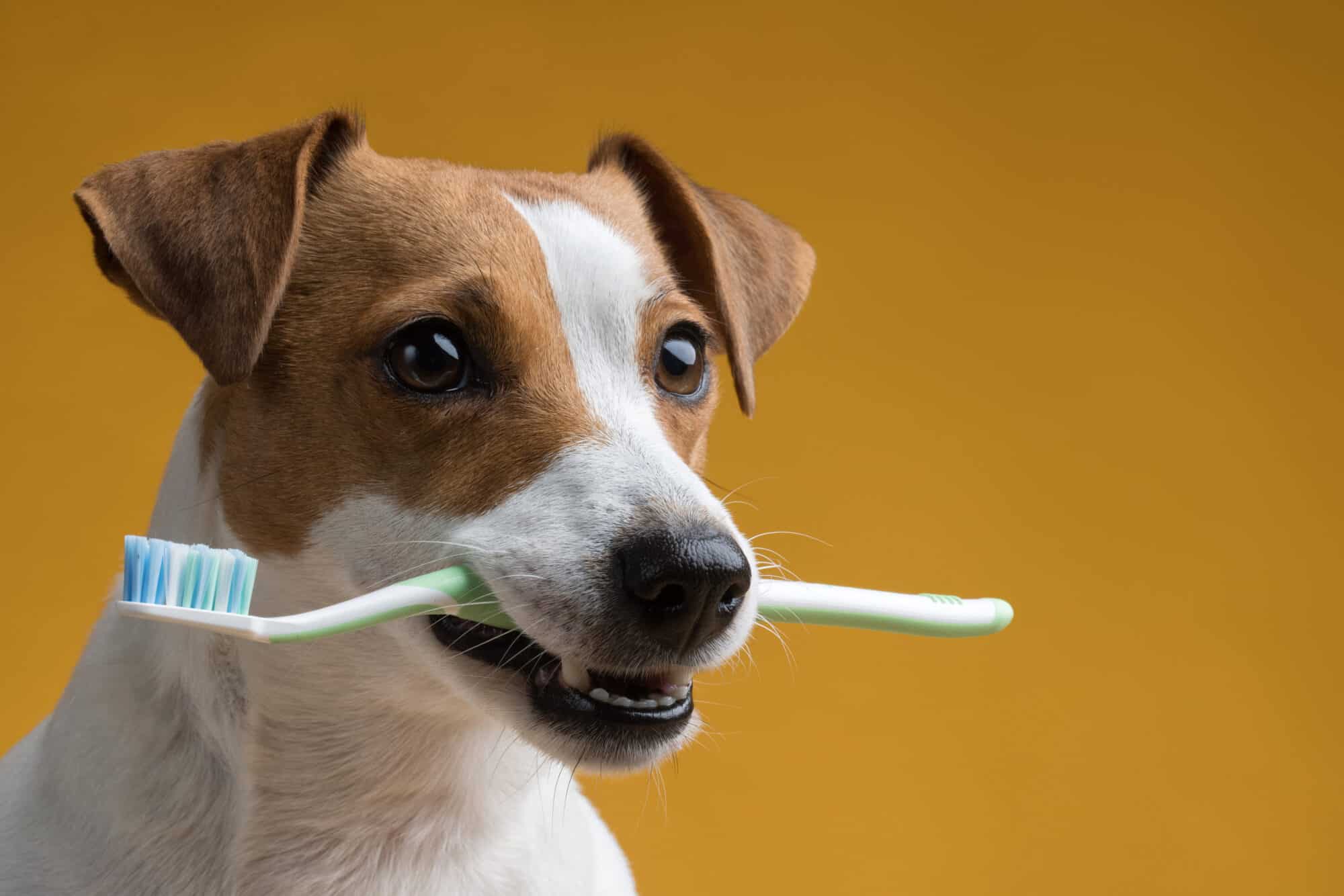Preventing Pet Periodontal Disease

If there is a good thing to say about periodontal disease, it’s that this common condition affecting the majority of all cats and dogs. Pet periodontal disease is 100% preventable. With daily teeth brushing at home, routine dental exams and cleanings under anesthesia, pet owners can promote excellent dental health.
Part of the Plan
We pack a lot into a pet’s routine wellness exam. In addition to all of the elements that comprise preventive veterinary medicine (behavior, nutrition, vaccinations, weight, lifestyle, etc.), we venture to a place left alone by many owners: inside a pet’s mouth. Even a quick flip of their lip can show us evidence of tartar buildup, a known contributor to periodontal, or gum, disease.
Know the Signs
Pet periodontal disease starts with oral bacteria. Left alone, the bacteria forms into a film (plaque) that covers the teeth. Over time, the plaque calcifies into tartar along the gumline. Buildup of tartar typically develops on the back molars where it discolors the teeth.
The first indicator that something is wrong is bad breath. Gingivitis, the first stage of periodontal disease, is characterized by inflammation of the gums. You may see redness, bleeding, or swelling inside the mouth.
Gingivitis can be stopped with a veterinary dental cleaning. If untreated, gingivitis can progress to the other stages of periodontal disease that ends with broken or lost teeth. Other signs that periodontal disease is getting worse include:
- Yellow or brown teeth
- Irritability or aggression
- Social withdrawal
- Weight loss
- Food avoidance, dropping food, or chewing on one side
- Uncharacteristic drooling
- Bleeding
Tooth Decay and Loss
Dogs can sometimes get cavities (or caries) like people, but the primary cause of fractured or cracked teeth is due to oral bacteria. As tartar continues to build on the gum line, the gums recede, which creates more area for bacteria to multiply. Without the gums to support the teeth, teeth can easily break when chewing.
Oral bacteria can proliferate in the mouth. This perpetuates the cycle of inflammation and infection in the gums. What’s worse, bacteria can enter the bloodstream and travel to the body’s major organs. The heart, liver, and kidneys can be negatively impacted by periodontal disease.
Beyond Cleaning
Once a pet is safely anesthetized, we can examine, clean, and radiograph each tooth. Once we know the extent of periodontal disease, we may proceed with tooth extractions if necessary. Most pets bounce back without complications, although certain changes to their diet and lifestyle may be in order.
Here to Help
Having your pet’s teeth professionally cleaned every year, along with regular dental hygiene practices at home, adds to their vitality but proper dental care goes far beyond the way they look and feel. Linked to overall wellness, a clean mouth can impact a pet’s happiness.
If you have questions about your pet’s dental health, please give us a call at (540) 832-1751. Our veterinarians and staff members are always here to help at Crossroads Animal Hospital.

